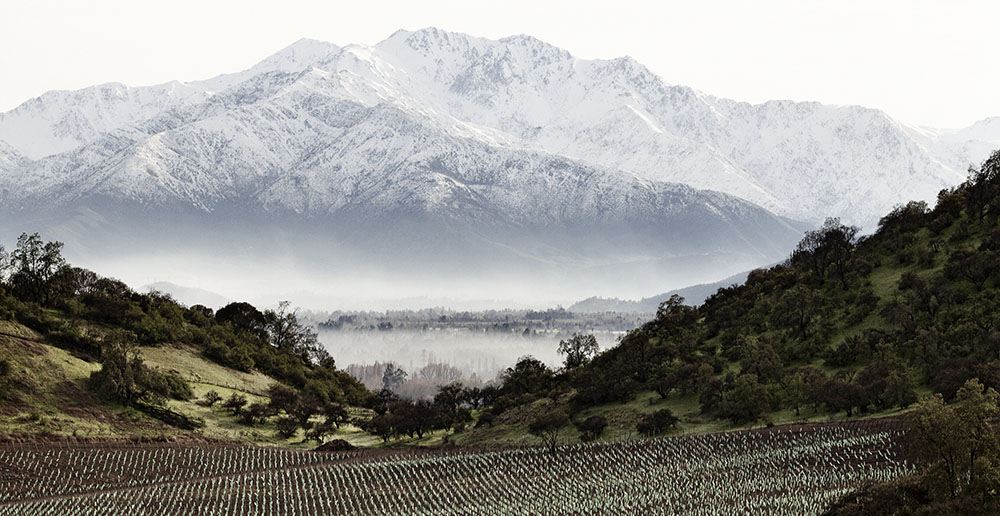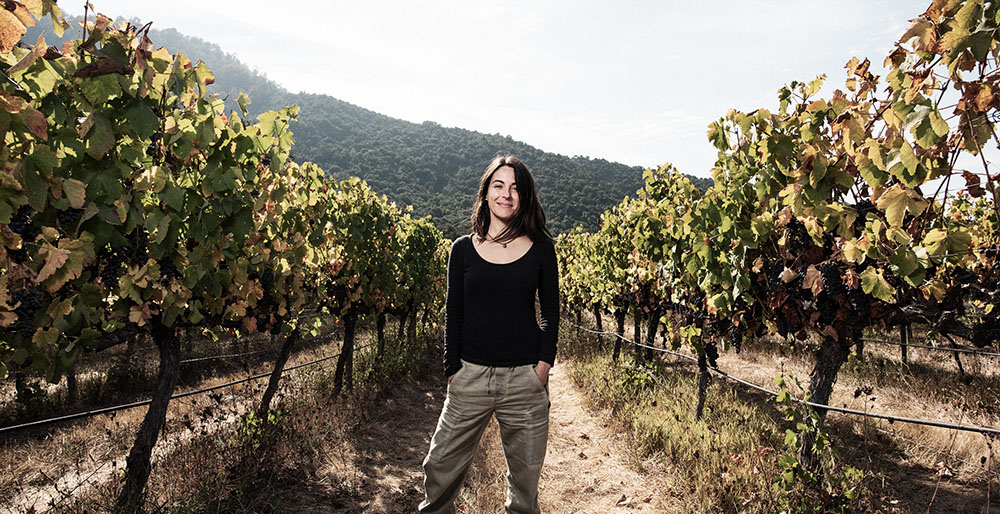This article is about Chilean Sauvignon Blanc, and I feel like I should tell you why. When I say Sauvignon Blanc, you probably think New Zealand. This region has done a fantastic job in carving out its identity with this grape. However, over the past few years, I have found that there is much more to Sauvignon Blanc than a tiny archipelago in the South West Pacific.

In the Loire Valley, Sancerre offers bright citrus and grassy notes. A recent trip to California stunned me with beautiful ripeness and not a savoury note in sight. In my own backyard, the wineries of Niagara have kicked it into high gear with several wineries producing complex and tropical offerings at reasonable prices. So, when I came across several bottles of Sauvignon Blanc from Chile, it shouldn’t have been a surprise that they had their own take.
I’m sitting in front of a dozen bottles of Sauvignon Blanc as I write this. I know when I think of Chilean wine, I think about affordable and high-quality Cabernet Sauvignon. In fact, most of the grapes planted in Chile are red — 74.3 percent if we’re being nit-picky. Of the white grapes planted, Sauvignon Blanc makes up 38.9 percent of the total, with Chardonnay coming in a close second. I’m curious: if your country has already found a way to define itself on an international scale with red wine, does this give you some freedom to be more creative in your interpretation of white varietals? Especially with a grape like Sauvignon Blanc, it must be tempting to imitate New Zealand given the success that country currently enjoys on the global market. But when I taste through these wines, it’s clear that there is something else at hand. If I’m talking big picture, the wines fall into two categories. Half feel as though they are offering a tip of the hat to France while the other half are tipping their hats to New Zealand.
But the Chilean bottles offer something that is often lacking from the Kiwi wines — restraint and subtlety. These bottles offer a nice balance of tropical fruit with savoury flavours and aromas. Speaking with Aurelio Montes, Jr. of his eponymous winery, I asked why his wines had a strong vegetal note and whether this was done deliberately to appeal to markets that have fallen in love with this style. He told me that the focus isn’t to try to imitate the winemaking styles of any other region but to work with what the vineyards provide. The Montes Sauvignon Blanc vineyards are in the Casablanca Valley and are located close to the Pacific Ocean. Being close to the ocean this keeps the vineyards cool and dry. The fruit ripens but you can expect to find higher pyrazines in the fruit.
Montes Spring Harvest Sauvignon Blanc 2016 ($14.95)
Aromas of sugar snap peas and crisp bell pepper. The savoury aromas relax after a few minutes in your glass and make way for passion fruit, pineapple and lime. This wine evolves from savoury to fruity over the course of an evening so you can pace your enjoyment of a bottle to suit your tastes.
Errazuriz Estate Series Sauvignon Blanc 2016 ($13.95)
The savoury note feels like a bouquet garni — one with an extra sprig of parsley. The aromas are soft and restrained, and on the palate, this moves quickly to Golden Delicious apple and lime. Nice balance and a little softer in intensity, this is a perfect bottle to dump in a pot of mussels — just make sure you have a second bottle on hand to enjoy on the side.
Casas del Bosque Reserva Sauvignon Blanc 2016 ($14.95)
Definitely a tip of the hat to New Zealand in this bottle with asparagus and red pepper dominating on the start and on the finish. The fruit on the palate is a little more tart — citrus and gooseberry but the savoury note really dominates this bottle.
Santa Carolina Reserva Sauvignon Blanc 2016 ($11.95)
The aromas are sharp citrus with fresh bell pepper. There is a nice intensity and a mineral note to this wine that gives it a little weight on the palate. Finishes with nice acidity that lingers on the finish.
Miguel Torres Las Mulas Organic Sauvignon Blanc Reserva 2017 ($13.95)
A stark contrast to the Montes Spring Harvest Sauvignon Blanc by starting with aromas of lime, pink grapefruit, passion fruit and mineral. On the palate, it becomes savoury and the fruit is enveloped in red pepper and a nice grassiness. But the way this wine unravels on the palate really works: it finishes with nice, clean acidity yet the flavours are nice and reserved.
While these winemakers aren’t trying to copy New Zealand, they are definitely aware of the competition. As with red wines from Chile, Sauvignon Blanc offers exceptional value. Many bottles come in under 15 dollars, which puts them just below what you can expect to find from New Zealand. If you were to do a side-by-side comparison, these wines might not hold up if what you’re looking for is intensity, but in terms of overall quality and balance, they are very good wines.
So where does that put the rest of the wines? Noelia Orts is on the winemaking team at Emiliana. The Adobe Reserva is one of the cheapest bottles on the table in front of me, but it’s also one of my favourites. Clearly looking to Sancerre, it carries a whole lot of fruit and the pyrazines are buried under an avalanche of passion fruit, pineapple and lime. Orts told me that they harvest Sauvignon Blanc at Emiliana in three phases and then blend the wine down to get the best bottle possible. The Emiliana vineyards are also located in the Casablanca Valley, so it’s interesting how different in style this wine is compared to the Montes offering. Orts echoes the sentiment from Aurelio Montes, Jr.: it’s not about trying to mimic other regions but to make the best wines possible with what the vineyards provide.

Emiliana Adobe Reserva Sauvignon Blanc 2017 ($12.95)
This was my favourite bottle on the table, straight up. The tropical fruit climbs out of the glass with nice intensity — passion fruit, pineapple and grapefruit. The savoury note is present, but it’s well integrated and buried under the fruit. The acidity is bright and clean and makes me want to keep a bottle handy for my next fish fry.
Caliterra Reserva Sauvignon Blanc 2017 ($10.95)
The tropical notes are present and restrained as apple, lime and grapefruit. The acidity on this wine is crisp and bright and the finish is clean.
Root 1 Sauvignon Blanc 2016 ($12.95)
A little softer and more restrained than any of the bottles on the table, but definitely a tasty Sauvignon Blanc. The ripe fruit is passion fruit and lime. This is very easy drinking and something that would make a perfect match on the table next to seafood or lighter chicken dishes.
Frontera Concha y Toro Sauvignon Blanc 2017 ($8.95)
The clear winner in the value category, and it easily stands up to the other bottles on the table that are nearly double the price. Expect to find guava, melon, passion fruit and an interesting mineral note that adds some nice texture on the mid-palate.
Santa Rita 120 Reserva Especial Sauvignon Blanc 2017 ($11.95)
Strikes a fine line between the more vegetal bottles and the fruity, more affordable options listed here. However, I’ve decided it has more appeal to the tropical Sauv Blanc fans. The aromas and flavours are passion fruit, gooseberry, peach and lime. The texture is light but, on the clean finish, a whisper of bell pepper makes an appearance.
I realize that putting these wines into two categories is really simplifying an entire varietal. Given that Montes has a portfolio that offers some very nice premium bottles, I had to ask if he had given any consideration to tossing some Sauvignon Blanc in oak. He told me that, with a few exceptions, oak is something that is not done in Chile. He said that with the ripeness they achieve in the fruit, it’s something he doesn’t believe responds well to spending time in oak barrels. So, don’t expect to find any bottles that say Fumé on the shelves anytime soon.
In general, there is a lot of room for growth for white wines from Chile. Orts tells me that there isn’t just interest in Sauvignon Blanc, so we consumers can expect to see more Chardonnay (32 percent of all white grapes if we’re keeping track), but Rousanne, Marsanne, Viognier and Albarino have also caught the attention of winemakers and viticulturists in the country.
Just as I was starting to wrap up this piece, one more bottle showed up at my door. The 2017 Montes Outer Limits Sauvignon Blanc crashed the party of affordable bottles by bringing some premium to the table with its $30 price tag. It really shouldn’t be a surprise that this bottle would come from a winery like Montes, as they seem to be leading the charge.
So, what’s the final verdict? Is there a distinct style that we can expect? If value is a style, then Chile has got that covered. But, if we’re talking about winemaking, it looks like we’re all over the place. Regardless of style, you’re going to get a quality bottle of wine. The good news is that, at this price point, you can afford to gamble on whether you’re getting something tropical or savoury.
Montes Outer Limits Sauvignon Blanc 2017, Zapallar Coast ($30)
The vineyards are located 7 km from the Pacific Ocean and the proximity to the ocean helps moderate daytime heat. Tropical notes explode out of the glass with wild intensity. The flavours move from tropical to citrus with lime and pink grapefruit. The savoury note is restrained and well integrated with a note of hay bale buried under a mountain of fruit. It is clear that this isn’t Sancerre, nor is it trying to be New Zealand. Instead, it’s distinctly something different.
